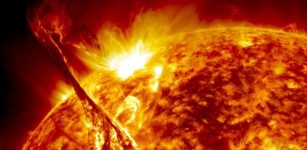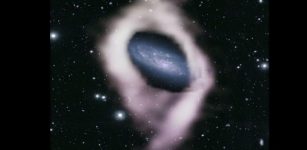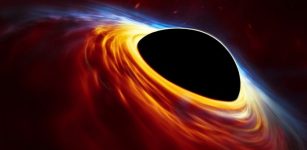NGC 2899: Beautiful ‘Space Butterfly’ Captured By ESO’s Very Large Telescope
Eddie Gonzales Jr. – MessageToEagle.com – Using ESO’s Very Large Telescope (VLT), astronomers were able to capture this beautiful ‘space butterfly’ with its symmetrical structure, beautiful colors, and intricate patterns.
 This highly detailed image of the fantastic NGC 2899 planetary nebula was captured using the FORS instrument on ESO’s Very Large Telescope in northern Chile. This object has never before been imaged in such striking detail, with even the faint outer edges of the planetary nebula glowing over the background stars. Image credit: ESO
This highly detailed image of the fantastic NGC 2899 planetary nebula was captured using the FORS instrument on ESO’s Very Large Telescope in northern Chile. This object has never before been imaged in such striking detail, with even the faint outer edges of the planetary nebula glowing over the background stars. Image credit: ESO
This striking bubble of gas—known as NGC 2899—appears to float and flutter across the sky. The object has never before been imaged in such striking detail, with even the faint outer edges of the planetary nebula glowing over the background stars.
NGC 2899’s vast swathes of gas extend up to a maximum of two light-years from its center, glowing brightly in front of the stars of the Milky Way as the gas reaches temperatures upwards of ten thousand degrees. The high temperatures are due to a large amount of radiation from the nebula’s parent star, which causes the hydrogen gas in the nebula to glow in a reddish halo around the oxygen gas, in blue.
This object, located between 3000 and 6500 light-years away in the Southern constellation of Vela (The Sails), has two central stars, which are believed to give it its nearly symmetric appearance. After one star reached the end of its life and casts off its outer layers, the other star now interferes with the flow of gas, forming the two-lobed shape seen here.
Astronomers were able to capture this highly detailed image of NGC 2899 using the FORS instrument installed on UT1 (Antu), one of the four 8.2-meter telescopes that make up ESO’s VLT in Chile. Standing for FOcal Reducer and low dispersion Spectrograph, this high-resolution instrument was one of the first to be installed on ESO’s VLT and is behind numerous beautiful images and discoveries from ESO.
FORS has contributed to observations of light from a gravitational wave source, has researched the first known interstellar asteroid, and has been used to study in-depth the physics behind the formation of complex planetary nebulae.
Written by Eddie Gonzales Jr. – MessageToEagle.com Staff










